KeJi
Posted: 21 June 2012 Filed under: Ramblings | Tags: i-dat Leave a commentI was part of the i-DAT team who developed KeJi for the Cheltenham Science Festival. KeJi means science and technology in Mandarin and is a playful artificial intelligent creature that visitors to the Cheltenham Science Festival can ‘chat’ to via Twitter or sms txts. Visitors can also play the game, ‘KeJi Bounce’. The game gives birth to a unique KeJi spawn character whose behavior is linked to the ECG of the players heart rate and biological data. Players have to bounce on a trampoline to keep their creature afloat and win the game.
The installation went down really well with over 300 people playing the game, including Vince Cable. Check out the KeJi website for more info.
Thinking Digital 2012
Posted: 1 June 2012 Filed under: Ramblings | Tags: conference, gateshead, newcastle, thinking digital Leave a commentThe conference opened on the Tuesday afternoon with a number of workshops. I elected to attend the “What’s trending in social media” discussion.
This was chaired by Katie Moffat (@katiemoffat) and the panel consisted of Christian Payne (@Documentally), Jas Dhaliwal (@Jas), Stephen Waddington (@wadds) and Will McInnes (@willmcinnes). This was a really interesting discussion on what’s happening in social media and future trends. It’s hard to believe that 1 in 5 page impressions is Facebook despite the fact that timeline is annoying a lot of its users. In fact, due to its popularity, some companies focus more on Facebook than any other web presence. Like timeline, this also has annoyed people as brands put shops where shops shouldn’t be. Some other impacts of social media is how popular you are on the social networks, the more you are likely to benefit offline. 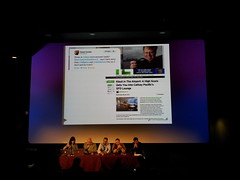 For example, a high score in Klout can get you into Cathy Pacific’s First and Business Class Lounge – shades of down and out in the magic kingdom by cory doctorow. As for the future, apparently “the future is niche” and SoLoMo (social, local, mobile) are gonna be big.
For example, a high score in Klout can get you into Cathy Pacific’s First and Business Class Lounge – shades of down and out in the magic kingdom by cory doctorow. As for the future, apparently “the future is niche” and SoLoMo (social, local, mobile) are gonna be big.
The next day started at 9am. I was in the Livecast Lounge (or the cheap seats as we all called them) which with hindsight was better than sitting in the main hall as a number of people complained at the 1st break about not being able to see the stage nor being able to get out easily for a “comfort break”. With a teas/coffees/water table at our disposal, wifi access and the freedom to get up and walk about, this was definitely excellent forward planning on my part 🙂
The 1st session was entited “Soul of a New Machine” and was opened by Ken Segall who worked closely with Steve Jobs and has the distinction of coming up with the idea of putting “i” in front of Apple’s products by naming the iMac, well the iMac. Whether you like or think this is annoying, it’s loads better than Jobs’ alternative which was MacMan. He was followed by Professor Paul Watson from Newcastle University who talked about his Social Inclusion through the Digital Economy project, something that I have a bit of an interest in. Adrian Hon, creator of Zombies, Run was next up. he talked about his Kickstarter funded book and offered 4 pieces of advice:
- Experiment
- Recycle failures
- Be patient
- Make enemies
Not so sure about that last one 🙂 The final speaker of this session was Magnus Lindkvist (@Trendymagnus) who is always entertaining. He introduced us to 2 new words: infobesity – how we are completely overloaded with information – and ikeafication – how everything has now become reduced and shrink-wrapped to a commodity.
The session after the break was called “Thinking Digital” and was opened by Tom Chatfield (@TomChatfield) who has written a number of books exploring digital culture. He was followed by Sebastian Seung (@sebastianseung) who is a computational neuroscientist at MIT. His lab recently released EyeWire an online game that enables the public to map neural connections by playing a game of colouring neural images. He talked about how this has helped with his research into the workings of the brain and autism. The next speaker was Peter Gregson (@petergregson) who describes himself as a music & technology alchemist. Amongst the things he talked about was goPlay. He wanted to perform 21st century chamber music so helped developed a program that generated complimentary electronic music by analysing the music he played on his cello. Unfortunately the demonstration he gave didn’t work but he was able to do a performance at the start of the next day which was amazing. As soon as there’s a video of it available i will publish a link to it. The final speaker of the session was Mikko Hypponen (@mikko). Mikko is the Chief Research Officer at F-Secure in Finland and has fought some of the biggest virus outbreaks on the net. He talked about viruses that have infiltrated computers laying dormant for years before being activated. He also believed that the biggest threat isn’t necessarily criminals but foreign governments. So, after being scared out of our wits, we then broke for lunch.
The session after lunch was called “Thinking Physical” and opened with Alice Taylor (@wonderlandblog) of MakieLab who use 3D printing to make customisable action dolls. You design your doll on their website and using 3D printing they make it. What i thought was interesting was they’re sized to fit Lilipad Arduinos, Bluetooth, RFIDs and other nearfield tags. Now there’s a future project if ever I saw one! Nathalie Miebach followed next and uses weather data from storms to make complex sculptures which in turn become musical scores for a string quartet to play.
After Nathalie was Helen Czerski (@helenczerski) a bubble physicist and oceanographer. Based at Sothampton she researches the role that bubbles play as an interface layer between the sea and the sky. The last speaker before the break was Pam Warhurst who gave one of the most passionate talks of the 1st day. She helped set up Incredible Edible Todmorden. She wanted to use unused public land to grow vegetables and use it to engage school children. In my opinion she was the modern day embodyment of the 70s punk ethic – just get on and do it! She also followed a long held belief of mine in that it’s easier to say sorry then to get permission. So, instead of going thru council redtape, she got some volunteers to dig and plant vegetables. The project has taken off so much that plants around public buildings have even been replaced with veg.
After the next break, the next session was called “Culture Code” and opened with us voting on the finalists of the Startup Competition that was held the previous afternoon. The 2 finalists were EmberAds – an online advertising angency – and YossarianLives! – a metaphorical search engine. Both very interesting but for me the search engine just edged it and it must have for everyone else as that was the winner. The voting was followed by a talk by Zach Lieberman (@zachlieberman) whose work I’ve quite admired. I knew of him as he co-founded openFrameworks but the thing I found most interesting was Eyewriter which was a $50 eye tracking system made from a PS3 camera. This is the link to the Instructables page and is such a cool hack. After Zach was Margaret Maitland (@eloquentpeasant), an Egyptologist currently working as a curator with the British Museum Future Curators programme. She used her blog, The Eloquent Peasant, to report on the looting of antiquities during the Egyptian Revolution and to refute the claims of the government that nothing was wrong. Another example of blogs being used to expose the truth I feel. This was followed by a performance by Jessica Latshaw (@jessicalatshaw) whose performance on a New York subway train went viral. The day was rounded off by Professor Sugata Mitra (@sugatamitra) who is an Educational Technologist. His project consisted of building an ATM-like device in the wall of a New Delhi slum with an internet-connected PC and, with little direction, watched how a virtual classroom emerged organically where the children in the slums began to learn, teach themselves and each other. Not sure if the same outcome would happen in this country! We then went to the conference dinner where I was lucky enough to be sat with Zach Lieberman and Katherine Jewkes (@Katherine_Ann)
The first session of the day was entitled “Unconventional Wisdom” and started with Peter Gregson’s rescheduled performance. He was followed by Alan Moore author of No Straight Lines: Making Sense of Our Non-linear World. He argues that old rules we have used previously to organise our lives around no longer apply. With my background this is an obvious argument but sometimes we need someone to point out what’s under our noses which is what I felt Alan’s talk did. After Alan was Aimee Di Marco whose talk is fair to say sorted out the men from the boys. Aimee is a specialist registrar in general surgery at Imperial College and she talked about how using robots for surgery has resulted in faster recovery times, reduced risk and reduced patient trauma due to minimal invasive procedures. She opened with a photo of a body fully opened up with all the guts and gore clearly visible. Considering it was the conference dinner the night before, I think a few people wished they had stayed at home. What was fascinating about Aimee’s talk was that in just 20 years, surgery had gone from the body cavity being opened and a lengthy recuperation time for the patient to a robot now entering the body via the anus and the patient being sent home the same day with a couple of paracetamol for the discomfort. Next up was Rosanne Bachman (@rosannebachman) whose talk was about how the rapidly changes in technology, whilst being positive, has decreased predictability and increased risk. The final talk of the session was by Steven Kyffin, the Dean of the School of Design at the University of Northumbria and he talked about design led innovation.
There was another break before the next session “The Future We Will Create”. This was opened by Ralph Rivera (@ralphrivera) who is the the BBC’s Director of Future Media. He’s responsible for the future development of BBC iPlayer whilst overseeing BBC’s interactive services, BBC Online and BBC Red Button. During his talk he showed us the work undertaken by the BBC for viewing the Olympics including a version of the iPlayer that allows you to jump around the timeline and between events – VERY IMPRESSIVE. The Beeb was then followed by Facebook in the guise of Simon Cross (@sicross) who talked about how great Facebook was to work for and how the timeline was conceived out of one of their hack days. Unfortunately I couldn’t stop thinking about a comment from the session on social media where someone asked, if we’re providing Facebook with it’s content then shouldn’t we be entitled to a cut of their IPO as contributing editors. Although having said all that, having a QR code on their office roof is pretty cool 🙂 After this was a talk by Richard Banks (@rbanks), a principle interaction designer at Microsoft Research in Cambridge. He’s part of a team that is looking at family life to try and figure out how the digital should fit in appropriately. He’s written a book called The Future of Looking Back asking how we’ll manage our collections after we’re gone. For example, what will take the place of shoeboxes full of pictures and dog-eared record albums? Richard is looking at how we might manage the digital artifacts and content we’re creating now and how we might pass on or inherit these kinds of items in the future. The final speaker of the session was Simona Francese whose work is about using chemical technology to squeeze information out of a simple fingerprint such as a person’s sex, diet and contact with drugs. This was another fascinating talk not least because of the problems she had with getting funding for the project. Despite being turned down, she just carried on with the project and now has a working tool.

Lunch then followed and because of the time of my train home, I had to miss the final session called Disturbing the Universe. This was a very interesting conference with a diverse collection of speakers. Anyone working within the digital realm in whatever capacity should attend this. It’s interesting, thought-provoking and inspiring.
Link to Thinking Digital storify
Olympic Torch
Posted: 20 May 2012 Filed under: Ramblings | Tags: olympic, torch Leave a commentSo I went and watched the Olympic Torch leave Plymouth today and captured the moment it went along Coburg street
Push to add drama
Posted: 16 April 2012 Filed under: Ramblings | Tags: performance, video Leave a commentI love this
Spectre
Posted: 24 January 2012 Filed under: Ramblings | Tags: exhibition, video Leave a commentIt’s always nice to help out and to get a mention 🙂
1. Helicopter ride
Posted: 16 January 2012 Filed under: Bucket list, Ramblings | Tags: bucket list Leave a commentCraftivism videos
Posted: 16 January 2012 Filed under: Ramblings | Tags: hack, open source, workshop Leave a commentSo after over 2 years, I’ve finally put my videos up from the Craftivism exhibition that I was a part of here. Enjoy 🙂
Lego album artwork
Posted: 3 October 2011 Filed under: Ramblings | Tags: artwork, lego, music Leave a commentI have loved lego ever since I was a kid and it’s always good to see it used in a creative, unusual way….such as reproducing album covers with it. So check this out – 30 Classic Music Albums Recreated With Lego
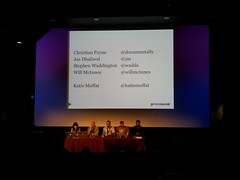
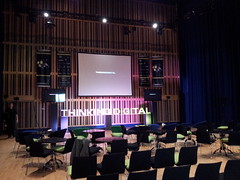
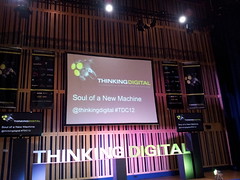
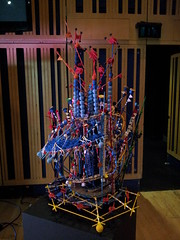
 Â
 